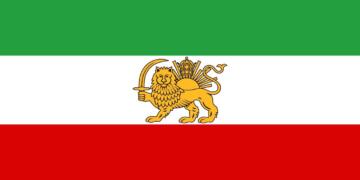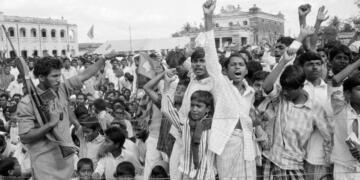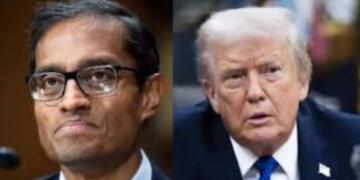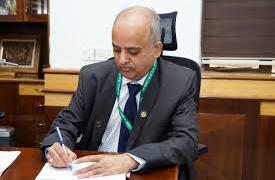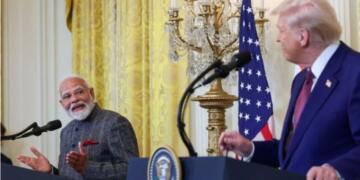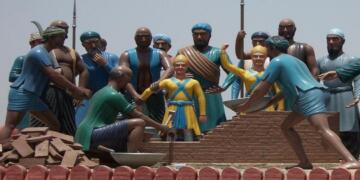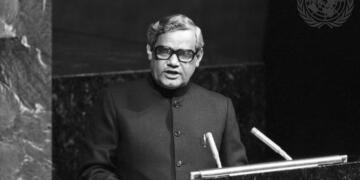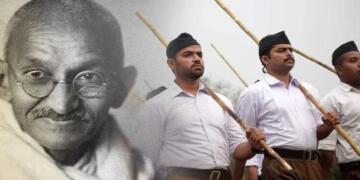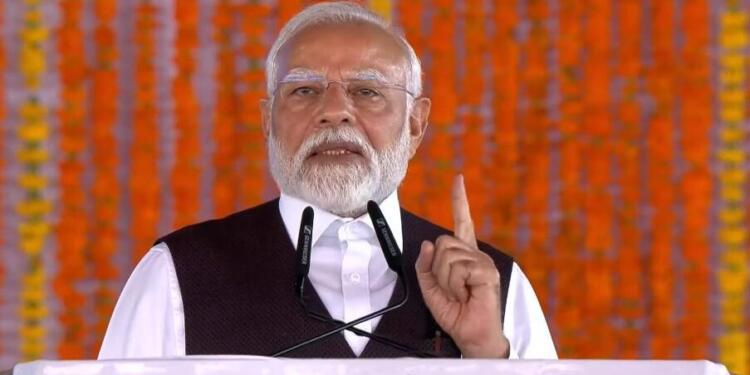In the summer of 1975, a 25-year-old Narendra Modi walked through crowded railway stations and city streets in Gujarat, wearing a turban, a flowing beard, and the robes of a Sikh.
But he was not a pilgrim or a religious preacher. He was a wanted man, actively being hunted by the police under orders from Indira Gandhi’s government. His disguise wasn’t a choice — it was a necessity.
As India slipped into a state of Emergency, civil liberties were suspended, opposition leaders were jailed en masse, and the Rashtriya Swayamsevak Sangh (RSS), of which Modi was a full-time pracharak, was banned. With senior leaders already behind bars, ground-level organisers like Modi were targeted next. To escape arrest and keep the resistance alive, he vanished underground — and the Sikh identity was just one of several he would adopt to stay hidden.
Modi’s choice to go into hiding was not about self-preservation alone. With the RSS disbanded and anti-Emergency voices silenced, he took it upon himself to support and coordinate the underground movement. His disguises evolved constantly. In one phase, he assumed the appearance of a Sikh man — complete with turban and a thick beard. In another, he roamed towns as a sadhu, clad in saffron robes, carrying little more than a cloth bag and a prayer book. In other situations, he blended in as a worker or a helper, a nameless aide moving silently through cities and villages.
These disguises allowed him to evade police raids, cross state borders without suspicion, and carry out his mission. He changed not only his appearance, but also his voice, body language, and daily habits. Every day brought a new risk, and any mistake could have meant prison or worse.
Why Modi Went Underground
The Emergency declared by Indira Gandhi on 25 June 1975 fundamentally changed the democratic fabric of India. Civil rights were scrapped, elections were postponed, and the press was placed under strict censorship. Prominent opposition leaders including Jayaprakash Narayan, Morarji Desai, Atal Bihari Vajpayee, L.K. Advani, and George Fernandes were arrested and jailed without trial. Thousands of student leaders, journalists, activists, and workers were detained under draconian laws.
The government cracked down particularly hard on organisations like the RSS, which had a vast network of ground-level workers. With the RSS banned, Modi, then a little-known organiser in Gujarat, became a part of the underground resistance. His job was to connect activists across states, pass on messages, and coordinate the distribution of anti-Emergency literature. To do this, he had to stay invisible.
Keeping the Resistance Alive
Even while underground, Modi remained active. He travelled between Gujarat, Rajasthan, Madhya Pradesh, and Maharashtra, helping print and distribute lakhs of banned pamphlets and magazines that carried the message of resistance. Often, he personally transported the material — hidden inside holdalls or between clothes — to avoid detection at railway stations and police checkpoints.
He helped set up secret meetings between opposition leaders and ensured the functioning of safe houses where those still fighting against the Emergency could meet, rest, and plan. On at least one occasion, he assisted in moving George Fernandes, one of the most-wanted men at the time, to a secure location. The risks were enormous. Some of Modi’s close associates were arrested. Police discovered letters signed under his pseudonym, “Prakash”, and interrogated many activists in hopes of finding him. But Modi always remained a step ahead, thanks to his constant movement, clever disguises, and meticulous caution.
The Climate of Fear and Control
While Modi remained in disguise, many other leaders endured harsh treatment. Jayaprakash Narayan’s health deteriorated in prison. George Fernandes was arrested, handcuffed, and publicly humiliated. Several activists faced solitary confinement, custodial torture, and repeated interrogations. The state, driven by fear of dissent, used every possible measure to stifle resistance — including forced sterilisation campaigns, mass evictions, and the systematic erosion of press freedom. India’s democracy had effectively been placed under lockdown.
In this environment, even the act of distrusting a leaflet or holding a secret meeting was an act of courage. Modi’s work — largely unnoticed at the time — was part of a larger web of resistance that refused to let democratic ideals die out.
The Rebel in Disguise
As India observes 50 years since the Emergency, the image of Narendra Modi dressed as a Sikh, blending into the crowd to avoid arrest, offers a striking contrast to the towering figure he is today. His underground life — full of risks, disguises, and silent defiance — is a lesser-known chapter that shaped his understanding of surveillance, strategy, and survival.
For 19 months, he stayed hidden — not out of fear, but out of conviction. His story is a reminder that democracy has always had defenders in unexpected places, sometimes wearing turbans, sometimes sleeping on floors, always resisting in silence.


